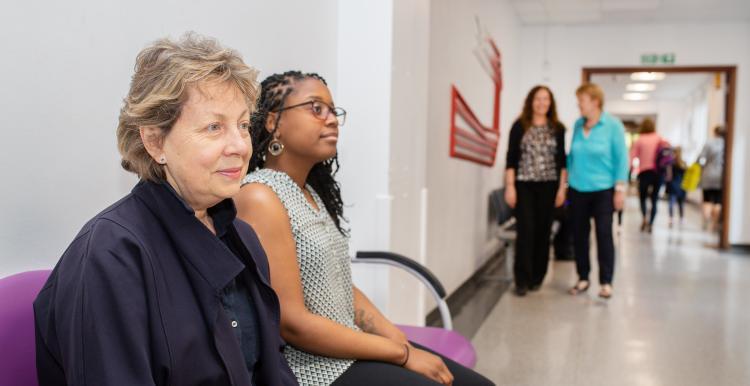National survey highlights decline in people’s experience of urgent and emergency care.

Published this week by the Care Quality Commission (CQC), the survey reveals the responses from patients who attended either a major consultant-led A and E department (Type 1) or an urgent treatment centre or minor injury unit (Type 3) run directly by one of 122 acute hospital trusts in England during September 2022.
Although people surveyed remained broadly positive about their interactions with staff, this year’s results show a decline in positivity for every question asked where a historical comparison is available.
Positive results
Interactions with staff
- 84% of patients who used Type 3 services said health professionals ‘definitely’ listened to what they had to say.
- 80% of Type 3 patients ‘definitely’ had enough time to discuss their condition with a health professional, although lower than 85% in 2020.
- 79% of Type 3 patients ‘definitely’ had confidence and trusts in health professionals, although lower than 82% in 2020.
Privacy
- 88% of Type 3 patients said they were ‘definitely’ given enough privacy when being examined and treated, although lower than 91% in 2020.
Key areas for improvement
Waiting times
- Patients experienced longer waiting times than previous years, with 17% of Type 1 patients waiting more than 4 hours to be examined compared with 4% in 2020.
- 15% of Type 3 patients with an appointment waited more than 2 hours to be examined (5% in 2020) and 18% without an appointment (7% in 2020).
- 76% of Type 1 patients and 66% of Type 3 patients were not told how long their wait would be.
- Similarly, 82% of Type 1 patients and 79% of Type 3 patients were not kept updated on how long their wait would be.
Availability of staff
- While they were waiting to be treated or examined, 56% of Type 1 patients who reported that they needed help said that they were unable to get help with their condition or symptoms from a member of staff, compared with 45% in 2020.
- Later, during their care or treatment, 45% of Type 1 patients that reported needing attention said that they were ‘always’ able to get a member of medical or nursing staff to help them, compared with 58% in 2020.
Privacy
- 45% of Type 1 patients and 49% of Type 3 patients ‘definitely’ had enough privacy when discussing their condition with the receptionist, compared with 55% and 59% for Type 1 and Type 3 services in 2020.
- 78% of Type 1 patients said they were ‘definitely’ given enough privacy when being examined and treated, compared with 84% in 2020.
Meeting individual needs
- Of those patients who had communication needs (language needs or communication needs related to a disability, sensory loss or impairment), 53% of Type 1 and 69% of Type 3 respondents said staff ‘definitely’ helped with their needs. Twenty-seven percent of Type 1 patients and 20% of Type 3 patients said staff did not help them.
Pain management
- 51% and 58% of Type 1 and Type 3 patients respectively said staff ‘definitely’ did everything they could to help control their pain. This compares with 60% and 63% for Type 1 and Type 3 services in 2020.
Interactions with staff
- 71% of Type 1 patients ‘definitely’ had confidence and trust in staff examining and treating them, compared with 77% in 2020.
- 72% of Type 1 patients felt they were treated with dignity and respect ‘all of the time’, compared with 81% in 2020.
Information given before discharge
- 46% of Type 1 patients said that a member of staff ‘completely’ told them about what symptoms to watch for regarding their illness or treatment when they went home, compared with 53% in 2020.
- 51% of Type 1 and 65% of Type 3 patients were ‘definitely’ given enough information to care for their condition at home. This compares with 60% and 70% for Type 1 and Type 3 services in 2020.
Dr Sean O’Kelly, CQC’s Chief Inspector of Healthcare, said: “These latest survey responses demonstrate how escalating demand for urgent and emergency care is both impacting on patients’ experience and increasing staff pressures to unsustainable levels. Staff are working extremely hard amidst challenging circumstances. We see that reflected in these results, but also during our inspections and monitoring of services and in the discussions with clinicians in CQC’s emergency medicine specialist advisor forum.
“The last urgent and emergency survey was carried out shortly before the second peak of the pandemic when A&E and Type 3 attendances were significantly lower than pre Covid levels – so the decline in positive feedback compared to then must be seen in that context. But it remains extremely concerning that for some people care is falling short, and we cannot afford to ignore the long term decline shown in relation to issues like waiting times, information provided when people leave to go home, access to pain relief and emotional support.
“As we made clear in our annual State of Care report last year, the rise in demand for urgent and emergency care and challenges staff face in meeting that demand is a symptom of a much wider capacity and access issue across health and social care. Urgent and emergency care requires the support of the whole hospital and the surrounding local health and social care system. Without that support and without a more co-ordinated approach, more and more people whose needs can be better met by other services will continue to seek help at emergency departments and urgent care centres.
“I encourage NHS trusts to reflect on their individual results to identify what changes they might be able to make to help drive improvements, and to use CQC’s People FIRST online resource as a support. But there is also a wider and very urgent need for Integrated Care Systems to ensure that local services are set up in a way that is designed around the needs of the population they serve, and that those services are supported to come together to help manage the increasing demand and ensure the best quality of care for all.”
In addition to a report on the findings for England, CQC has published the results for each of the 122 individual trusts that took part so that people can see how their local services performed, and a report identifying those trusts that have performed better or worse across the survey overall.
CQC will continue to use the findings as part of its wider monitoring of the quality of hospital services and to plan and target its inspections.
Find further information about the 2022 Urgent & Emergency Care Survey including the results for England and each NHS trust that took part at:


